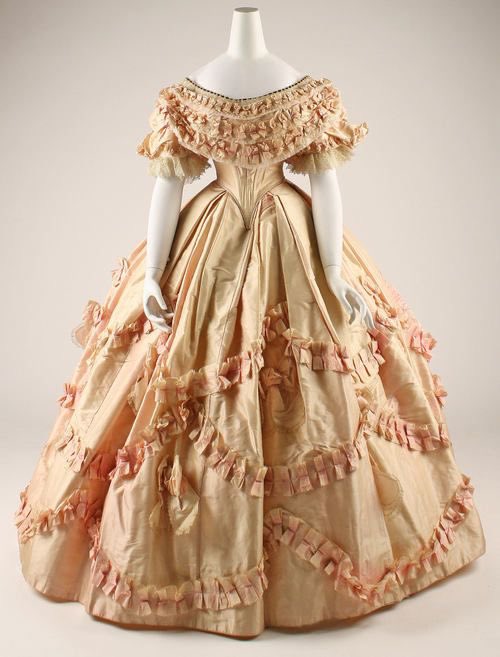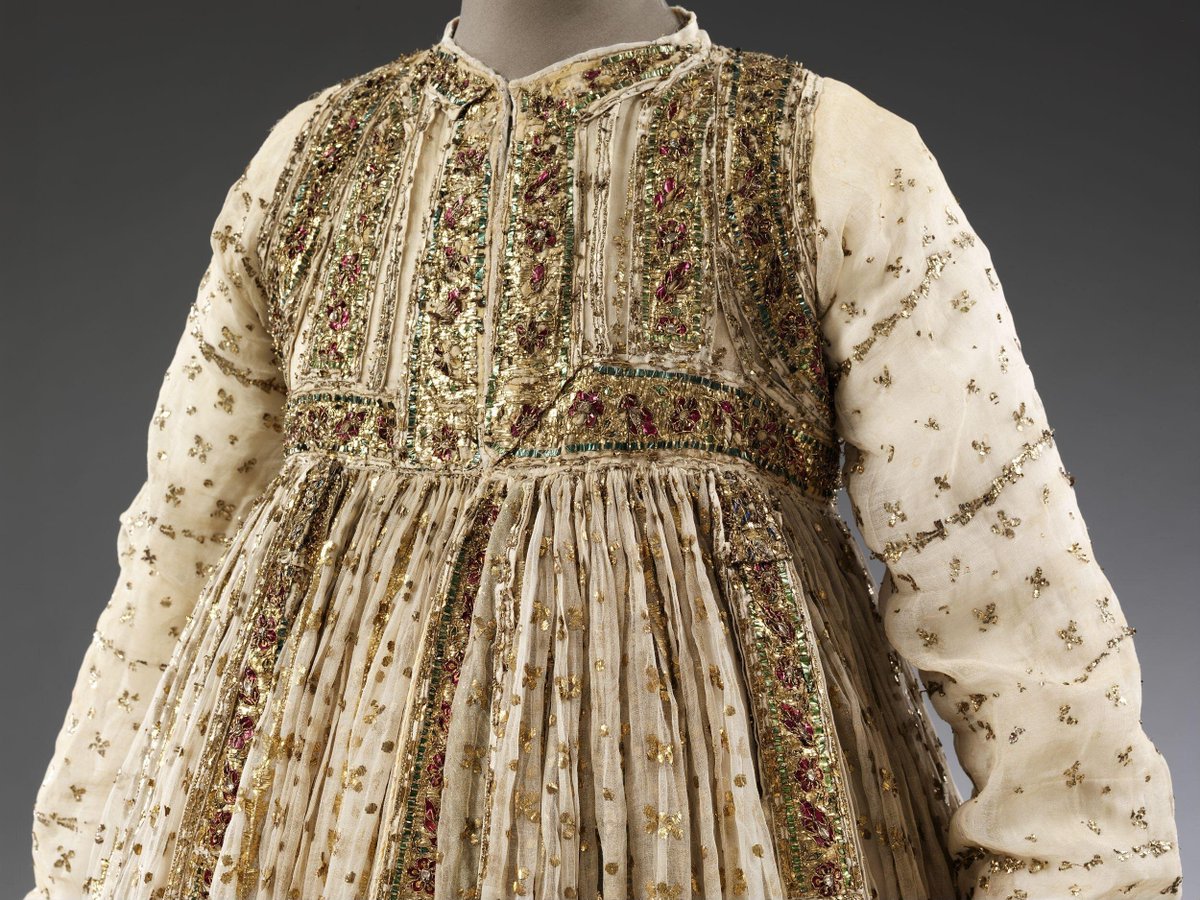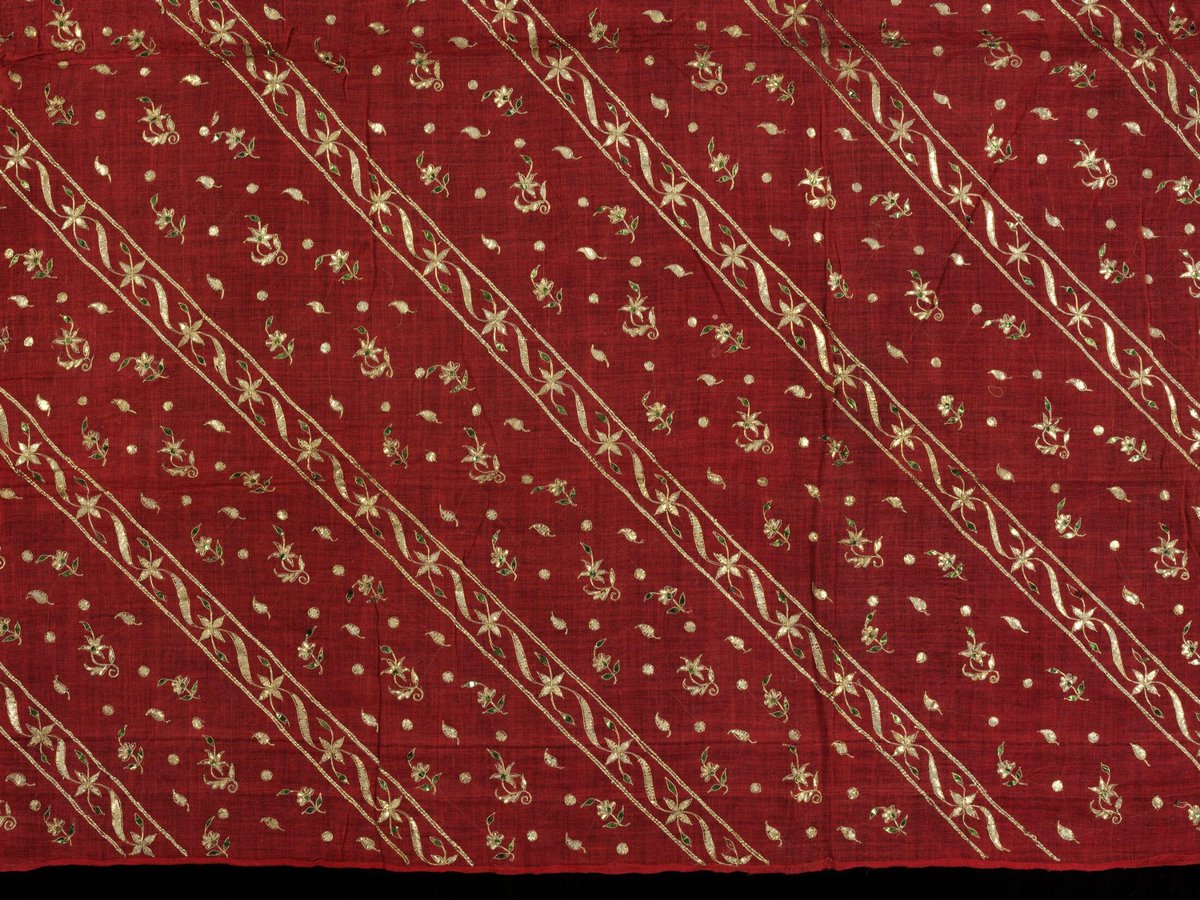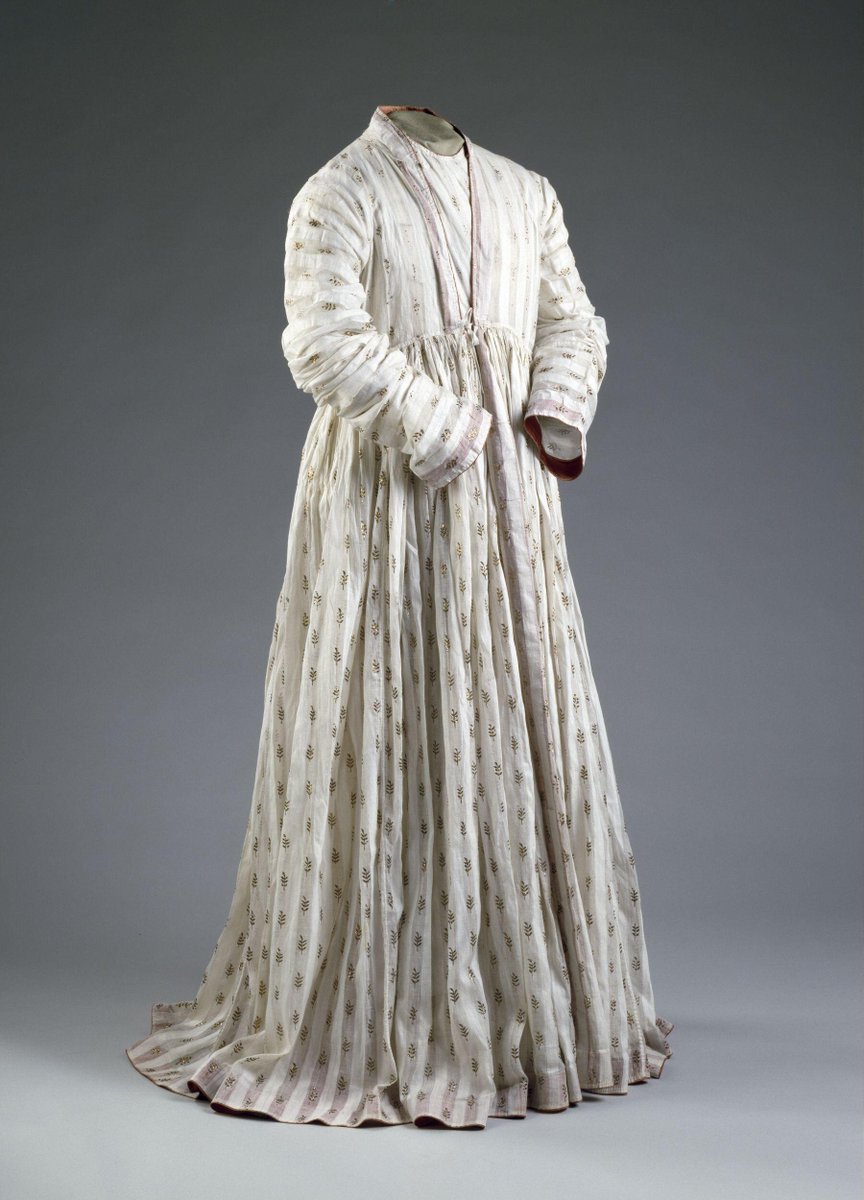
1 - Greetings, everyone. It's time for #ThreadTalk!
By popular demand, everything's coming up paisley.
#Paisley is an ancient motif with a Scottish name--to learn more about it, we'll be traveling the globe🌍, visit goats 🐐 & talk shit about the East India Company 🤬.
By popular demand, everything's coming up paisley.
#Paisley is an ancient motif with a Scottish name--to learn more about it, we'll be traveling the globe🌍, visit goats 🐐 & talk shit about the East India Company 🤬.

2 - Paisley's proper name is boteh or buta, but it's also been called "persian pickles," "Welsh pears," "ham hock" pattern, or "mango" just to name a few.
Persian pickles?🥒 Right.
And it's old. You can see it on architecture in Balkh, Afghanistan dating to the 9th C.
Persian pickles?🥒 Right.
And it's old. You can see it on architecture in Balkh, Afghanistan dating to the 9th C.

3 - "Boteh" is a Persian word that means "shrub" or "bush." Whatever it is, it's leafy. And it's very eye-catching!
It's asymmetrical and playful, and appeared on carpets, tiles, fabrics, & more. This woodblock would have been used to print the pattern on fabric.
It's asymmetrical and playful, and appeared on carpets, tiles, fabrics, & more. This woodblock would have been used to print the pattern on fabric.

4 - We're pretty sure boteh is of Indo-Iranian provenance, but no one really agrees on *what* it is, exactly.
It might be a fig. Or a leaf🍃. Or a pickle🥒? Or the Zoroastrian symbol of life & eternity. ☯️
This samite fabric dates from Persia in the 7-10th C.
It might be a fig. Or a leaf🍃. Or a pickle🥒? Or the Zoroastrian symbol of life & eternity. ☯️
This samite fabric dates from Persia in the 7-10th C.

5 - A similar shape also shows up in some La Tené art in Bronze Age Europe, like in this helmet & gold disk.
But there's no real argument, IMHO, that boteh design & perfection was primarily in Persia, and later in India. Especially re: fabric.
Though these are super shiny 🤩🤩

But there's no real argument, IMHO, that boteh design & perfection was primarily in Persia, and later in India. Especially re: fabric.
Though these are super shiny 🤩🤩


6 - Sultan Zein-al-Aabedin (d. 1468) is credited with bringing the boteh to India, and ultimately adapting the design to Kashmiri woolen fabric.
The rise of the Mughal Empire saw the boteh motif rise to prominence on shawls worn by men as a sign of rank, wealth, and status.
The rise of the Mughal Empire saw the boteh motif rise to prominence on shawls worn by men as a sign of rank, wealth, and status.

7 - Iranian kings in the Safavid dynasty also adopted boteh (boteh jegheh) as a sign of power & rank.
I think it also looks like a feather--but in some paintings, you can see the boteh in the clothing and the turban, like below depicting Shah Tahmasp (1514-1576).
I think it also looks like a feather--but in some paintings, you can see the boteh in the clothing and the turban, like below depicting Shah Tahmasp (1514-1576).

8 - Now, back to India & shawls.
True Kashmir shawls are woven distinctively and made of wool. Cashmere & pashmina wool comes from Changthangi goats. Their finer undercoat is used in pashmina shawls.
You can meet some goats 🐐🐐🐐in this video:
True Kashmir shawls are woven distinctively and made of wool. Cashmere & pashmina wool comes from Changthangi goats. Their finer undercoat is used in pashmina shawls.
You can meet some goats 🐐🐐🐐in this video:
9 - Even finer shawls were made of Tibetan antelope fur, called Shahtoosh. It's probably the only fabric I've come across that rivals Dhaka muslin in rarity & $$$.
Shahtoosh shawls were reserved for royalty only until Shah Jahan I (d. 1666).
Here is Babur bedecked in boteh.
Shahtoosh shawls were reserved for royalty only until Shah Jahan I (d. 1666).
Here is Babur bedecked in boteh.

10 - And so we come, of course, to the formation of the East India Company, the human trashcan Robert Clive, & the introduction of boteh to the West.
@DalrympleWill puts it best: the EIC was "a private company, run by an unstable sociopath."
Image: a pashmina from Kashmir.
@DalrympleWill puts it best: the EIC was "a private company, run by an unstable sociopath."
Image: a pashmina from Kashmir.

11 - All that looting, murdering, & theft made the East India Co. thugs tired. But they had to bring something home to their wives, am I right?
They ended up giving them pashminas & cashmeres, and of course... just like with muslin and with chintz, a fashion craze was born.
They ended up giving them pashminas & cashmeres, and of course... just like with muslin and with chintz, a fashion craze was born.
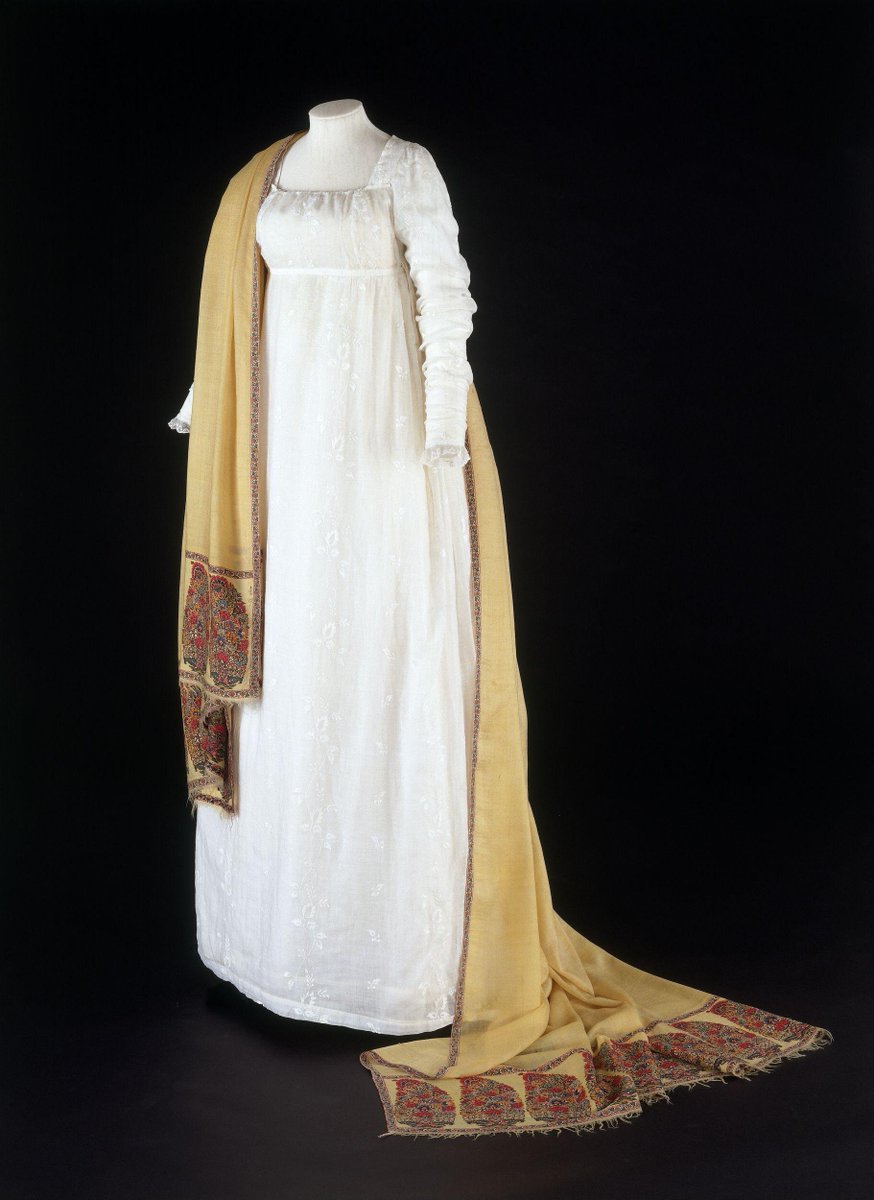
12 - Not to be left out, Josephine de Beauharnais, Napoleon's wife, also featured the motif in a number of her dresses and was A Big Fan.
You know what happens next: the race to make this pattern & fabric cheaper and without, you know, the artisans of India.
You know what happens next: the race to make this pattern & fabric cheaper and without, you know, the artisans of India.

13 - This was no easy task. Making these shawls was incredibly complex work, requiring multiple looms and weaving techniques not familiar in Europe.
This article is a must-read if you want to go down that pathway... textileasart.com/exc_kash.htm
Enter Jacquard.

This article is a must-read if you want to go down that pathway... textileasart.com/exc_kash.htm
Enter Jacquard.


14 - The Jacquard loom allowed reproduction of bokeh motifs in Europe on a larger scale.
I honestly wish they'd have stopped with the Regency. You get some lovely examples like this one, ca. 1800.
Wait. They call it "pine cone or patka motif". HOW MANY NAMES DOES IT HAVE?
I honestly wish they'd have stopped with the Regency. You get some lovely examples like this one, ca. 1800.
Wait. They call it "pine cone or patka motif". HOW MANY NAMES DOES IT HAVE?

15 - Though France had a decent production, it was Paisley, Scotland that became synonymous with bokeh--that's where the image is from.
Eventually, as you might guess, because of the industrialization and lower costs, Paisley boteh eliminated the need for imports from India.
Eventually, as you might guess, because of the industrialization and lower costs, Paisley boteh eliminated the need for imports from India.

16 - Which is not to say using the Jacquard loom was easy. It was just EASIER. And cheap.
By the time a young Queen Victoria (not her below) put a Paisley shawl on, that was it. England went completely batshit bonkers for paisley.
And... the result was not always good.
By the time a young Queen Victoria (not her below) put a Paisley shawl on, that was it. England went completely batshit bonkers for paisley.
And... the result was not always good.

17 - So let's get to it!
Our first piece is a wrapper (like a dressing gown) which was very common for paisley.
Not bad. Though it does really just pull from menswear of India. Not a big fan of the blue buttons, personally.
1850, American.
Our first piece is a wrapper (like a dressing gown) which was very common for paisley.
Not bad. Though it does really just pull from menswear of India. Not a big fan of the blue buttons, personally.
1850, American.

18 - This dressing gown though.
Girl. Step away from the loom. Those triangles aren't doing anyone any favor. For the 1870s, I feel a little betrayed.
I don't even mind the pattern. It's the zigzags.
Girl. Step away from the loom. Those triangles aren't doing anyone any favor. For the 1870s, I feel a little betrayed.
I don't even mind the pattern. It's the zigzags.

19 - Another dressing gown, 1875 this time. Also American.
I can't explain why I love this one so much.
OH WAIT.
IT HAS POCKETS.
I like the stripes this way -- I saw lots of sashes in earlier paintings that were similar. I would wear it. And carry around my pet opossum.
I can't explain why I love this one so much.
OH WAIT.
IT HAS POCKETS.
I like the stripes this way -- I saw lots of sashes in earlier paintings that were similar. I would wear it. And carry around my pet opossum.

20 - Deep breath.
This is gauze/muslin. Which is not something you would see on a Kashmir shawl, of course. And yet... we did because we could and...
It's... layer cake... nightmare. It looks almost like it was made by the DeepDream system, doesn't it?
This is gauze/muslin. Which is not something you would see on a Kashmir shawl, of course. And yet... we did because we could and...
It's... layer cake... nightmare. It looks almost like it was made by the DeepDream system, doesn't it?

21 - France, well. France. 1855.
Take a thing... just... add some pleats and make it... gauzy. And stick a bunch of paisley motifs on it and you've got...
I don't feel like I would want to touch this dress for some reason. It looks like a curtain mated with a butterfly net.
Take a thing... just... add some pleats and make it... gauzy. And stick a bunch of paisley motifs on it and you've got...
I don't feel like I would want to touch this dress for some reason. It looks like a curtain mated with a butterfly net.

22 - This 1880 dress is significantly better. I read that Kashmir scarves fell out of fashion when bustles came about, which makes sense. Wouldn't be a nice silhouette.
But this jacket is smart-looking, and has good balance with the rest of the ensemble. From Josephine Egan.
But this jacket is smart-looking, and has good balance with the rest of the ensemble. From Josephine Egan.

23 - Here we have... something?
It's velvet. So it's *furry*. Like... a furry... ahem... shrub? I don't think... I don't think this works, folks.
1860. America. Seems a little... ahem.
*cough*
It's velvet. So it's *furry*. Like... a furry... ahem... shrub? I don't think... I don't think this works, folks.
1860. America. Seems a little... ahem.
*cough*

24 - I honestly can't tell if this is horrible or wonderful. I think I'm at the point where I've just seen so much paisley that my eyes are a little dazed.
This is from 1902, and I can't get a better shot of it. But... I don't know. I REALLY DO NOT KNOW.
I think it's cursed.
This is from 1902, and I can't get a better shot of it. But... I don't know. I REALLY DO NOT KNOW.
I think it's cursed.

25 - This is just a work of ART. I mean, it also looks like it's tearing itself in two? BUT THE COLORS & TAILORING.
I have front & back, & I think I'm more obsessed with the back because you can see how it's pieced together. I'm always mad for Chantilly... 1889, Mme Noll Gross.

I have front & back, & I think I'm more obsessed with the back because you can see how it's pieced together. I'm always mad for Chantilly... 1889, Mme Noll Gross.


26 - At this point, a pale, understated damask paisley seems... almost confusing.
But I'll take it. Even if it's from the 1860s. Because I really love the look of the material here, and how the motif works up in the pale blue.
But I'll take it. Even if it's from the 1860s. Because I really love the look of the material here, and how the motif works up in the pale blue.
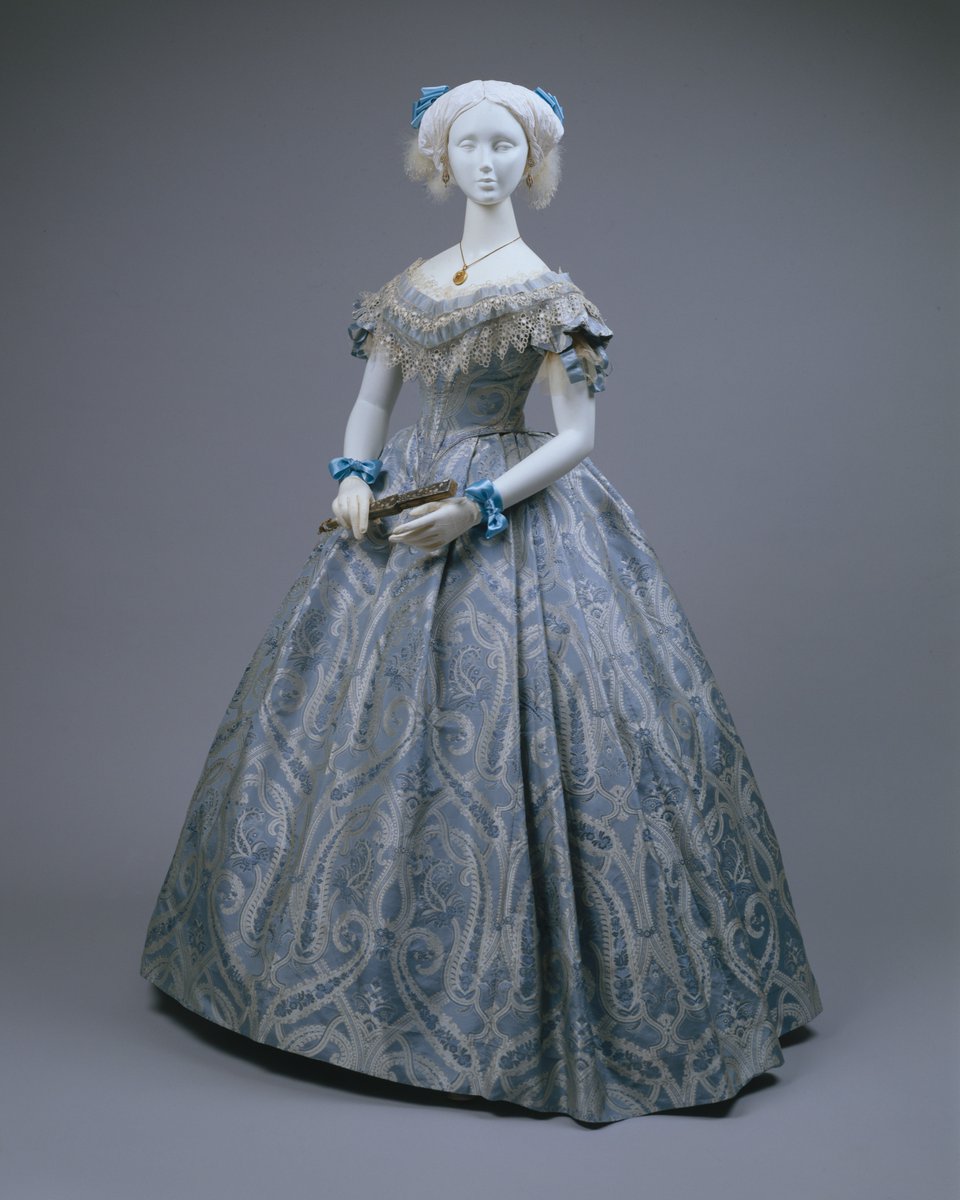
27 - Okay, and because I can't escape tonight without talking about the 60s/70s. Here's some vintage Seventeen Magazine & their "boho" look. You can thank the Beatles. Who, of course, went to INDIA.
Fresh off of the Summer of Love in 1970. I can smell the polyester.


Fresh off of the Summer of Love in 1970. I can smell the polyester.



28 - So, that's where we are. This ancient symbol of royalty& power, eventually became trinket from a bunch of assholes to their suffering wives, then turned into a craze.
This dressing gown here is literally cut up shawls. That sort of speaks for itself.
Fashion, y'all.
This dressing gown here is literally cut up shawls. That sort of speaks for itself.
Fashion, y'all.

29 - And so, we come to sources. If you, like me, loathe the East India Company, here's a great place to start: theguardian.com/world/2015/mar…
30 - Here we go: en.wikipedia.org/wiki/Paisley_(…
pdfslide.net/documents/buta…
bbc.com/culture/articl…
paisleypower.com/history-of-pai…
slate.com/culture/2015/1…
blog.culturalelements.com/a-brief-histor…
pdfslide.net/documents/buta…
bbc.com/culture/articl…
paisleypower.com/history-of-pai…
slate.com/culture/2015/1…
blog.culturalelements.com/a-brief-histor…
31 - paisley.org.uk/paisley-histor…
theguardian.com/fashion/galler…
guity-novin.blogspot.com/2018/07/chapte…
toa.st/blogs/magazine…
theregistryofsarees.com/blogs/news/his…
rlhf.info/paisley/
patternobserver.com/2014/05/20/pai…
en.wikipedia.org/wiki/Buta_(orn…
heritageinstitute.com/zoroastrianism…
textileasart.com/exc_kash.htm
theguardian.com/fashion/galler…
guity-novin.blogspot.com/2018/07/chapte…
toa.st/blogs/magazine…
theregistryofsarees.com/blogs/news/his…
rlhf.info/paisley/
patternobserver.com/2014/05/20/pai…
en.wikipedia.org/wiki/Buta_(orn…
heritageinstitute.com/zoroastrianism…
textileasart.com/exc_kash.htm
32 - Thanks for coming to my #threadtalk! I leave you with beauty. But hopefully, you can question it, too.
That's the thing with fashion. It may seem about the surface, but there's always a story there. Just waiting to be found. Mantle, 1880. Silk.
That's the thing with fashion. It may seem about the surface, but there's always a story there. Just waiting to be found. Mantle, 1880. Silk.

• • •
Missing some Tweet in this thread? You can try to
force a refresh


